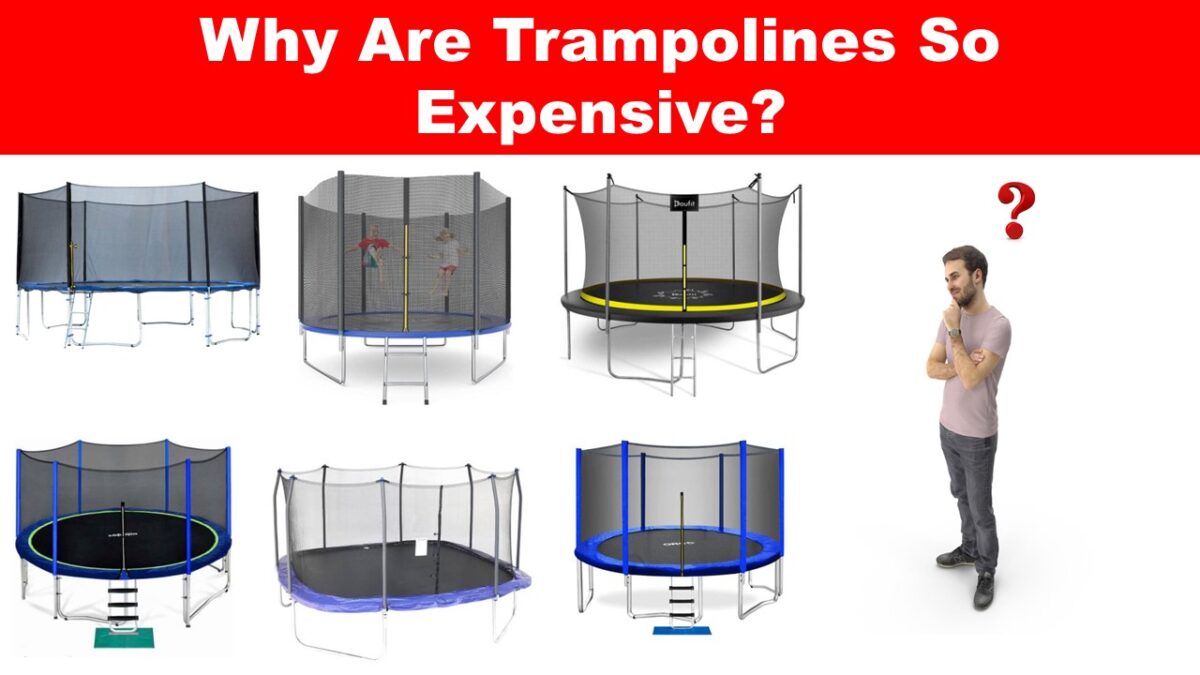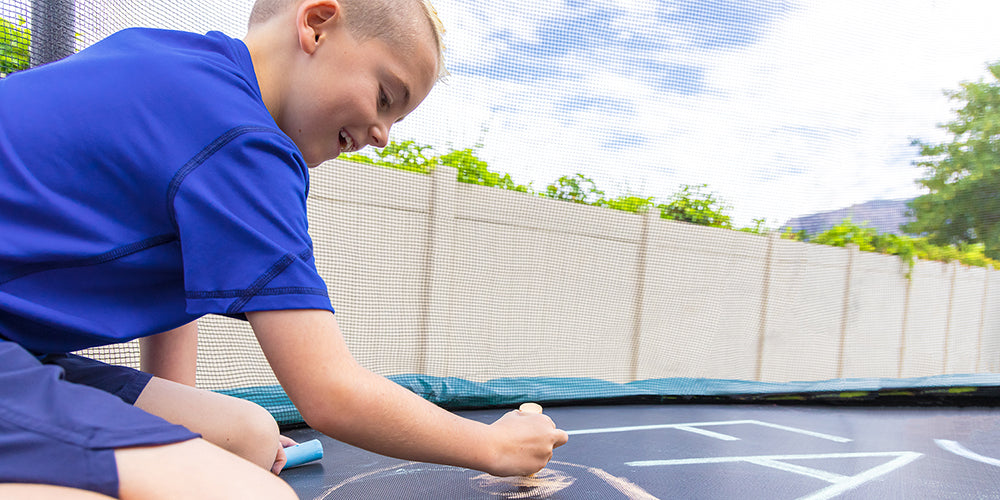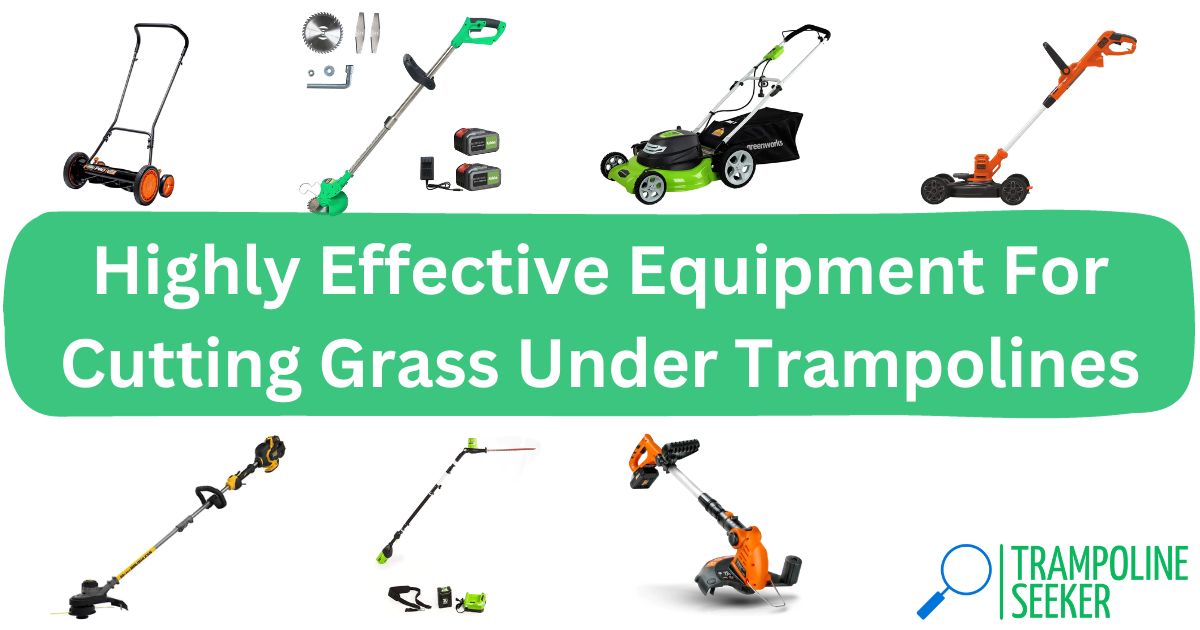The spring pad is the thick, protective outer layer that covers the trampoline’s springs and frame. It serves the important safety functions of preventing jumpers from landing on the hard steel frame or getting body parts caught in springs. Having the right size is crucial – too small and the springs and frame are exposed, too big and the pad will be ill-fitted and sag.
The key things to know when finding the right size replacement spring pad are:
- Measure across the center of your trampoline frame rather than just the jumping matt itself
- Match your existing spring count rather than solely relying on general frame size
- Allow for slight size differences in pads of 1-4 inches without overly compromising function
Follow the steps below and you’ll be well on your way to determining the optimal spring pad size for safe and happy bouncing!
Measure Your Trampoline Frame

The first step is accurately measuring your trampoline frame. This gives the baseline size that spring pads are designed to fit.
You’ll need:
- Cloth measuring tape
- Helper to hold other end of tape
Steps:
- Stand opposite your helper with trampoline between you
- Extend tape across center of frame getting helper to hold end
- Note measurement of frame diameter e.g. 10 ft
Know Your Shape
Importantly, take note of whether your trampoline is:
- Round – Measure straight across center
- Square/Rectangular – Measure across parallel sides
- Oval – Measure longest and shortest diameters
Recording the shape and dimensions ensures you get a spring pad suited to your frame.
Confirm Your Spring Count
While the frame size gives a good starting point, the spring count fine tunes the fitting.
Count the number of springs going around the edge of the trampoline bed. Common amounts are:
- Round – Typically 72, 88, 96 springs
- Rectangular – Typically 64, 72, 96 springs
Matching your spring count when choosing a replacement pad enhances the fit. If you can’t visually count, check specifications of your trampoline model online for the spring numbers.
Choose Spring Pad Size
You now have your key sizing criteria – frame dimensions and spring count. Use these when selecting a new spring pad.
As a general rule of thumb:
Round Trampolines Spring Pad Sizes

Frame Size | Spring Count | Spring Pad Size |
8’ | 64-72 | 7’6” |
10′ | 88-96 | 9’6” |
12’ | 96-128 | 11’6” |
Rectangular and Square Trampolines Spring Pad Sizes

Frame Size | Spring Count | Spring Pad Size |
8’ x 10’ | 64-72 | 7’6” x 9’6” |
8’ x 12’ | 64-72 | 7’6” x 11’6” |
10’ x 14’ | 96-110 | 9’6” x 13’6” |
Browse spring pads matching your criteria. Where possible, reference your original pad dimensions too.
Allow For Minor Size Differences
Don’t worry if your measurements and an available spring pad size are 1-4 inches different. Pads have some flexibility to stretch or bunch slightly. Just ensure any size difference doesn’t leave springs and frame exposed. Consider:
Pad Too Small
Gaps will emerge allowing contact with hazardous frame and springs. Avoid any pad more than 2 inches smaller than measurements.
Pad Too Big
Excess material will sag but still provide protection. Generally not problematic for jumpers but affects appearance.
Attach Properly For Safety
Once you’ve got the optimal sized spring pad, ensure it stays firmly in place through proper attachment. Use the loops, toggles or velcro designed to connect around the frame or springs. Check periodically for slipping and re-secure as needed. This prevents the pad working loose and creating a falling hazard around the trampoline.
With the right fitting spring pad installed safely, jumpers of all ages can bounce freely without fear of injury. Replacing worn pads restores that essential peace of mind for years more family fun.
Finding Compatible Pads for Different Brand Trampolines
Searching using your exact trampoline brand and model along with terms like “replacement pad” will generally surface suitable options. If struggling to find, check generic sizing guidelines for equivalents.
Do’s and Don’ts When Measuring for Spring Pads
Do:
- Use a cloth tape measure for flexibility
- Confirm trampoline’s shape before measuring
- Measure across full width of frame
- Double check spring count for sizing accuracy
- Select pad 2 inches smaller to 2 inches bigger
- Attach pad securely to avoid slipping
Don’t:
- Use rigid metal tapes that can’t flex over frame
- Assume one-size-fits-all round pads suit non-round frames
- Only measure the jumping matt diameter
- Pick pad more than 4 inches different to measurements
- Leave large gaps between pad and frame perimeter
Other Related Blogs:
- How to Fix/Replace a Trampoline Zipper?
- How to Measure a Trampoline for a New Mat?
- Why Does My New Trampoline Squeak?
- How To Install A Mat for a New Trampoline?
- How to Install a Trampoline on a Slope?
- Installation of 12 Foot Pro Line Avyna In-Ground Flat Line Trampoline?
FAQs on Finding the Right Sized Spring Pad
What are spring pads made of?
Spring pads consist of thick foam or fiber padding enclosed in durable vinyl coverings. They cushion falls against the hard steel trampoline frame and prevent contact with springs.
Do all spring pads have standard sizing?
No, padding comes in a range of sizes to fit everything from mini exercise tramps to full-sized backyard models. Measurements matching the frame and spring count is needed for ideal coverage.
Why does my spring pad not fit anymore?
Pads can stretch or deteriorate over years of use no longer fitting snug to the frame. Exposure to sun and rain also degrades vinyl covers. Check under pad for gaps where it has shrunk from the frame.
My spring pad is ripped – can I repair it?
For minor tears up to a few inches, vinyl repair kits can patch holes and stop further ripping. But extensive damage generally warrants replacing the entire pad.
How do I know if my spring pad needs replacing?
Signs that the trampoline pad has reached end of life include overstretching leaving large gaps, tears wider than your hand, broken attachment straps, and thinning foam insulation.
Conclusion
Finding the right size replacement spring pad ensures jumpers avoid injury from falls and enhances the look of your trampoline. Follow the guide above to accurately measure your frame, match your spring count, and allow for slight size variations when selecting a suitable new pad. And be sure to attach it securely. If you understand how sizing works, you can restore safe padding for many more hours of healthy, happy bouncing.
Articles You May Like to Read:













